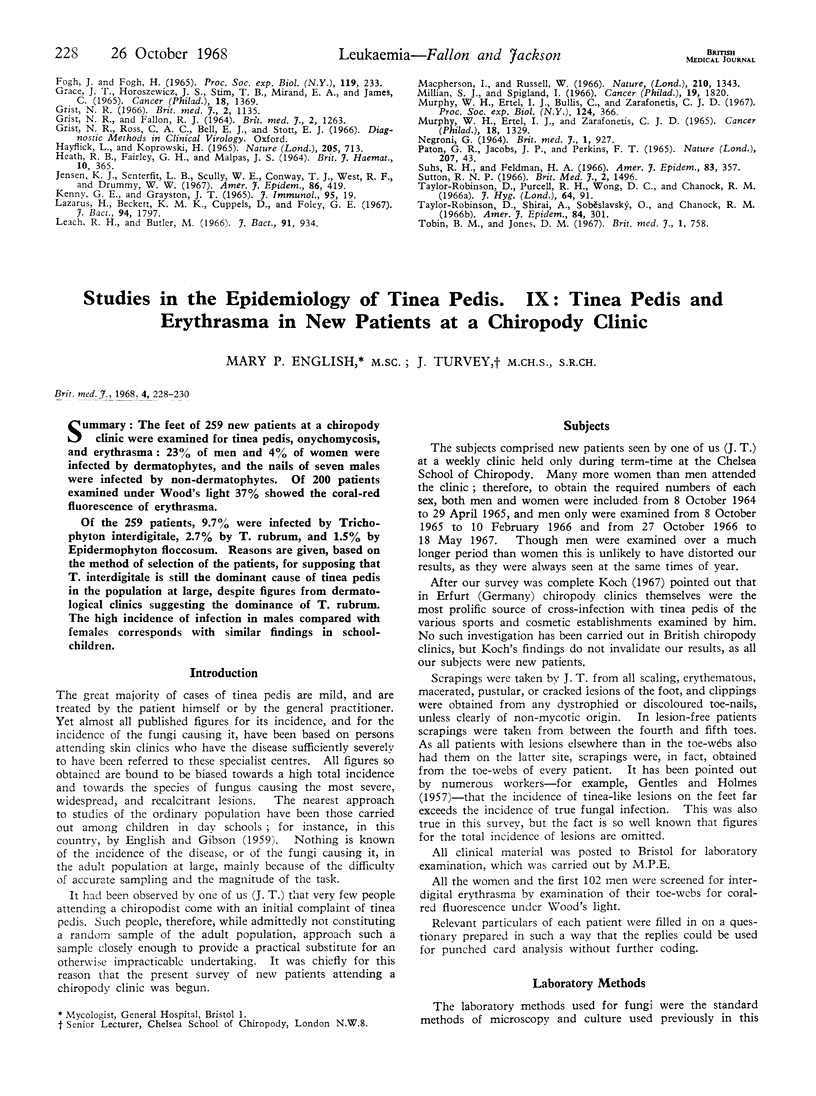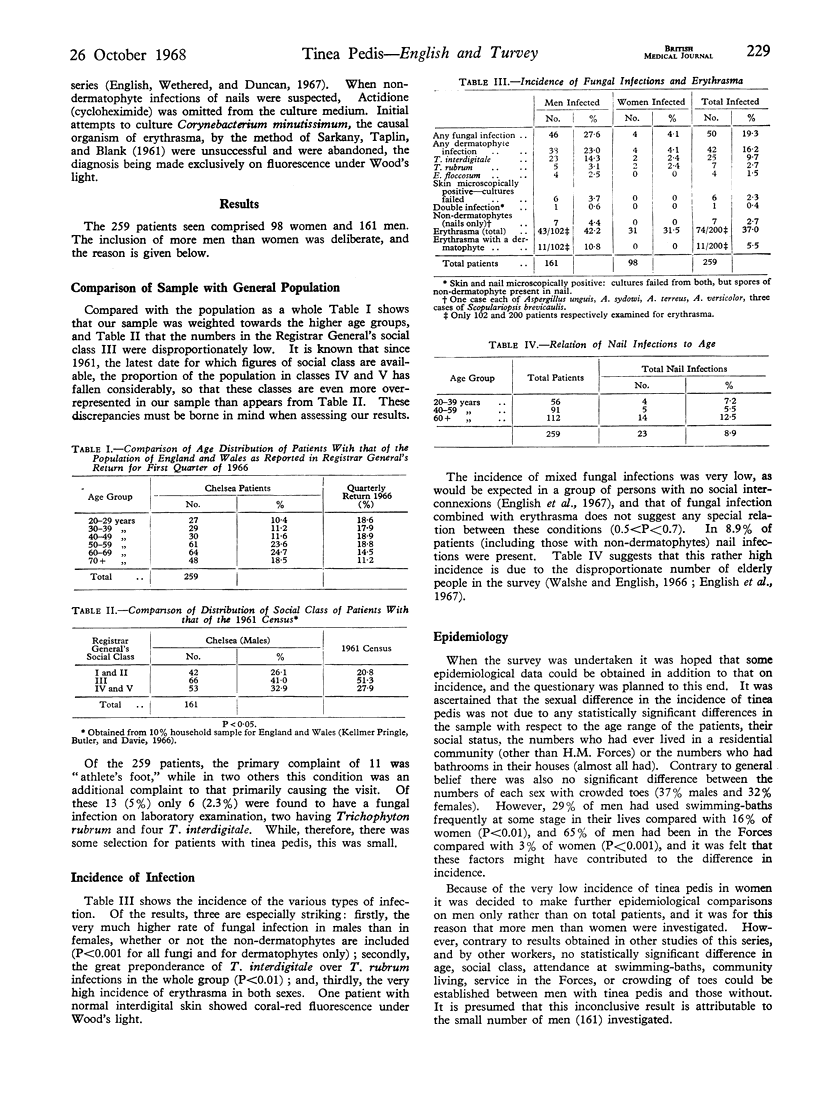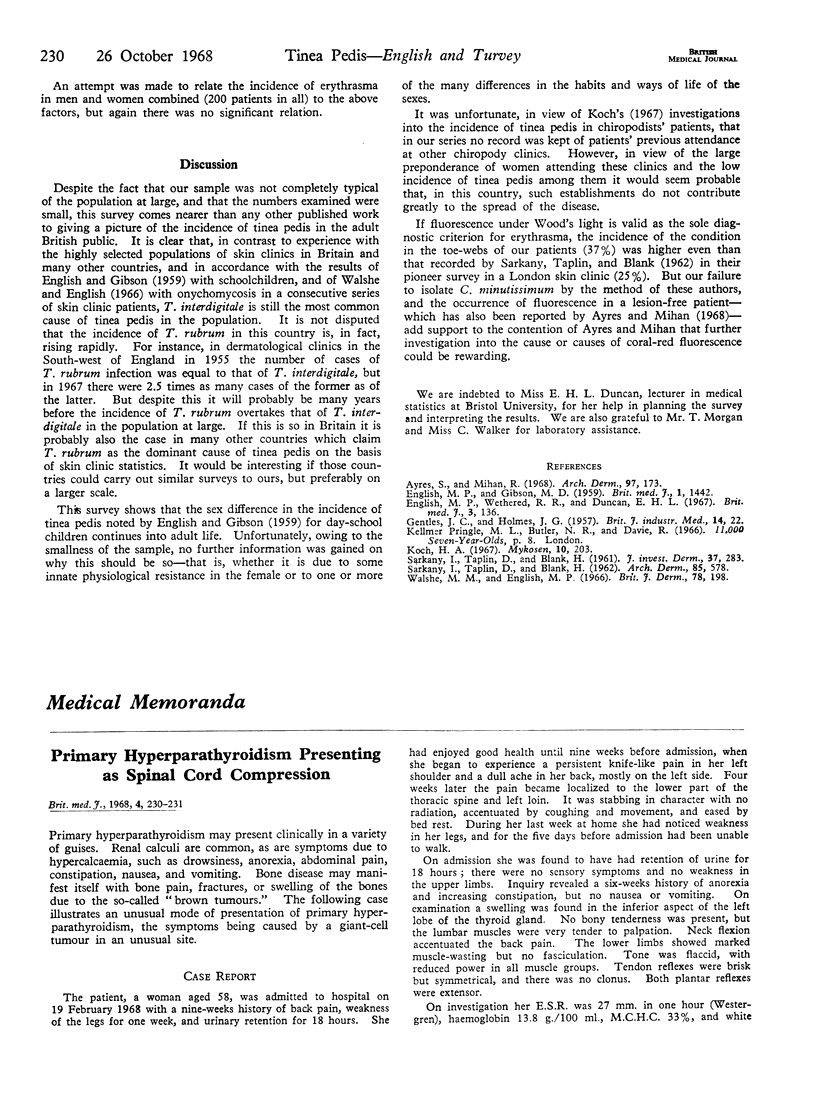Abstract
The feet of 259 new patients at a chiropody clinic were examined for tinea pedis, onychomycosis, and erythrasma: 23% of men and 4% of women were infected by dermatophytes, and the nails of seven males were infected by non-dermatophytes. Of 200 patients examined under Wood's light 37% showed the coral-red fluorescence of erythrasma.
Of the 259 patients, 9.7% were infected by Trichophyton interdigitale, 2.7% by T. rubrum, and 1.5% by Epidermophyton floccosum. Reasons are given, based on the method of selection of the patients, for supposing that T. interdigitale is still the dominant cause of tinea pedis in the population at large, despite figures from dermatological clinics suggesting the dominance of T. rubrum. The high incidence of infection in males compared with females corresponds with similar findings in school-children.
Full text
PDF


Selected References
These references are in PubMed. This may not be the complete list of references from this article.
- Ayres S., Jr, Mihan R. Erythrasma. Response to tolnaftate, an antifungal medication. Arch Dermatol. 1968 Feb;97(2):173–175. doi: 10.1001/archderm.97.2.173. [DOI] [PubMed] [Google Scholar]
- ENGLISH M. P., GIBSON M. D. Studies in the epidemiology of tinea pedis. I. Tinea pedis in school children. Br Med J. 1959 Jun 6;1(5135):1442–1446. doi: 10.1136/bmj.1.5135.1442. [DOI] [PMC free article] [PubMed] [Google Scholar]
- English M. P., Wethered R. R., Duncan E. H. Studies in the epidemiology of tinea pedis. 8. Fungal infection in a long-stay hospital. Br Med J. 1967 Jul 15;3(5558):136–139. doi: 10.1136/bmj.3.5558.136. [DOI] [PMC free article] [PubMed] [Google Scholar]
- SARKANY I., TAPLIN D., BLANK H. Incidence and bacteriology of erythrasma. Arch Dermatol. 1962 May;85:578–582. doi: 10.1001/archderm.1962.01590050008002. [DOI] [PubMed] [Google Scholar]
- SARKANY I., TAPLIN D., BLANK H. The etiology and treatment of erythrasma. J Invest Dermatol. 1961 Oct;37:283–290. [PubMed] [Google Scholar]
- Walshe M. M., English M. P. Fungi in nails. Br J Dermatol. 1966 Apr;78(4):198–207. doi: 10.1111/j.1365-2133.1966.tb12205.x. [DOI] [PubMed] [Google Scholar]


